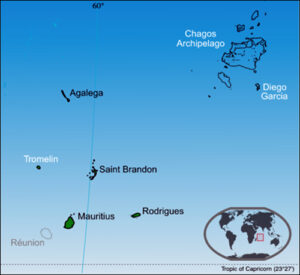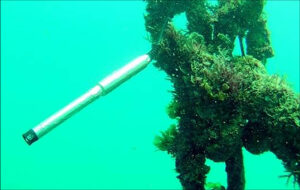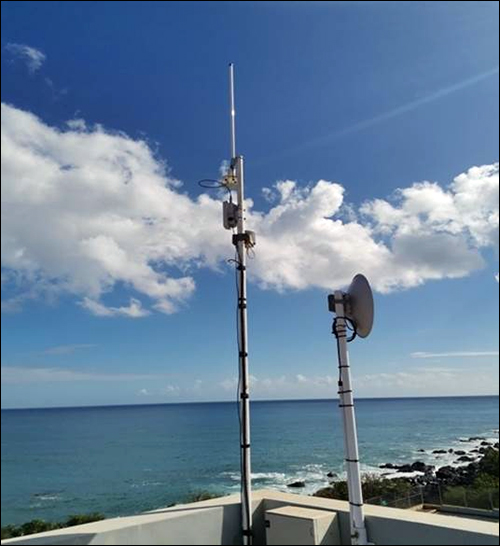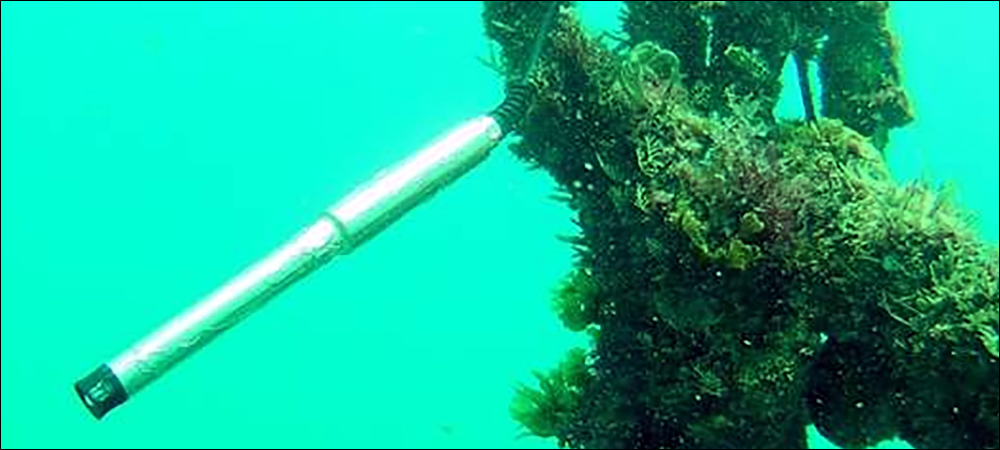- Real-Time IoT-based Seawater Monitoring
- Analyzing Key Water-Quality Parameters 24-7
- Highlighting Levels and Thresholds for Analysis and Decision-Making
Kerlink has announced that a custom-designed LoRaWAN-based solution deployed in Mauritius, an island nation in the Indian Ocean, is providing government agencies and water-science specialists with access to continuous data regarding key water-quality parameters. The company, a provider of solutions for the Internet of Things (IoT), offers technologies for designing, deploying and operating public and private low-power wide-area (LPWA) IoT networks.
The monitoring system, a proof-of-concept under a government-funded innovation program known as Blue Resilience, was designed and installed by Digital Twin Services (DTS), a Mauritian technology solutions provider that focuses on Industry 4.0 solutions. DTS is integrating products supplied by Kerlink, as well as fellow French IoT company Aqualabo, which designs, manufactures and supplies instruments and devices for the purpose of water testing and analysis.
Real-Time IoT-based Seawater Monitoring

Mauritius (Source: Wikipedia)
According to Kerlink, the Japanese bulk carrier MW Wakashio ran aground in 2020 on a coral reef southeast of Mauritius, near the Pointe d’Esny wildlife sanctuary. The vessel released more than a thousand tons of fuel oil into nearby waters. This spill along the archipelago’s coast caused what Kerlink describes as “the worst maritime pollution in the history of Mauritius,” as the island nation depends on the waters and its beautiful coral reefs for food security and ecotourism. Because of the oil spill, the country’s government launched Blue Resilience as a call for innovative proposals that could help authorities manage the island’s resources and economy.
The success of this proof-of-concept, according to Kerlink, laid the foundation for setting up an IoT-based real-time online monitoring system across the island to monitor seawater quality. The project includes the appointment of a consulting firm to guide authorities on the establishment of an IoT-based Lagoon Water Quality Index. This is expected to promote beach maintenance and management, support the local economy through a boost in tourism, and provide officials with a continuous beach outlook by ranking water quality as “excellent,” “good,” “fair” or “bad.”
The pilot commenced in October 2021 in Pointe aux Feuilles, and a second pilot site has now been chosen in Albion, on the island’s west coast. The monitoring solution for the pilot will employ several standalone communicating modules from Aqualabo’s AquaMod range, as well as digital sensors consisting of a standalone LoRaWAN wireless waterproof module and an antenna.
Analyzing Key Water-Quality Parameters 24-7

Aqualabo’s PHEHT sensor measures seawater pH. (Source: Aqualabo, Digital Twin Services)
“The integration of the complete end-to-end solution was simple and quick, via the use of a private LoRa network server,” said Severine Goulette, Aqualabo’s CMO, in a prepared statement. “Aqualabo’s sensors and devices ensure 24-7 monitoring to analyze key water-quality parameters for the continuous efforts to save the coral reef and improve the overall water quality.”
The system uses Aqualabo’s OPTOD Titanium digital sensor for measuring dissolved oxygen and temperature, NTU sensor for measuring turbidity, C4E sensor for measuring conductivity and salinity, PHEHT sensor for measuring pH, and EHAN sensors for measuring redox potential. The solution also includes the company’s HYDROCLEAN technology for automating the cleaning of systems for the oxygen and turbidity sensors along the coral reefs.
Johan Venkatasawmy, Digital Twin Services’ CEO in Mauritius, said in the prepared statement: “The quick and simple installation of this pilot project has underscored LoRaWAN’s reliability, versatility and suitability for this kind of seawater-monitoring project, which is one of our primary objectives as an island nation. We were very confident with the proposed solution, thanks to the products and expertise of our partners Aqualabo and Kerlink.”

Reduction-oxidation (redox), a type of chemical reaction in which the oxidation states of atoms are changed, is an important indicator of water pollution levels. Water is considered safe when the redox is between 200 and 600 mV. (Source: Digital Twin Services)
Highlighting Levels and Thresholds for Analysis and Decision-Making

Kerlink’s Wirnet iStation is being deployed in Albion. (Source: Digital Twin Services)
The solution transfers continuous seawater data via a private IoT network by Kerlink’s industrial-grade Wirnet iStation outdoor gateways. Data is transferred to a private IoT platform hosted in the government’s data center, instantly and securely. The system then displays information regarding various critical seawater parameters—temperature, pH, redox potential, conductivity, salinity, turbidity and dissolved-oxygen level—in the form of a dynamic graph and timeline that highlights targeted levels and critical thresholds for government specialists’ analysis and decision-making.
“Kerlink’s Wirnet iStations have shown their robustness, performance and flexibility worldwide to support LoRaWAN-powered wildlife and natural-resource protection projects in very diverse environments,” added Benjamin Maury, Kerlink’s head of international partnerships, in the statement. “Collaborating with Digital Twin Services and Aqualabo in this vital project to help preserve Mauritius’s pristine setting is another strong example of Kerlink’s commitment to protect the environment.”
Exhibitors at RFID Journal LIVE! 2022 will offer a wide range of sensors for various use cases, including environmental monitoring. To learn more, visit the event’s website.


